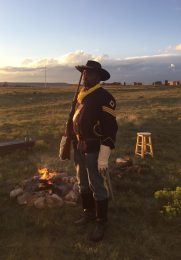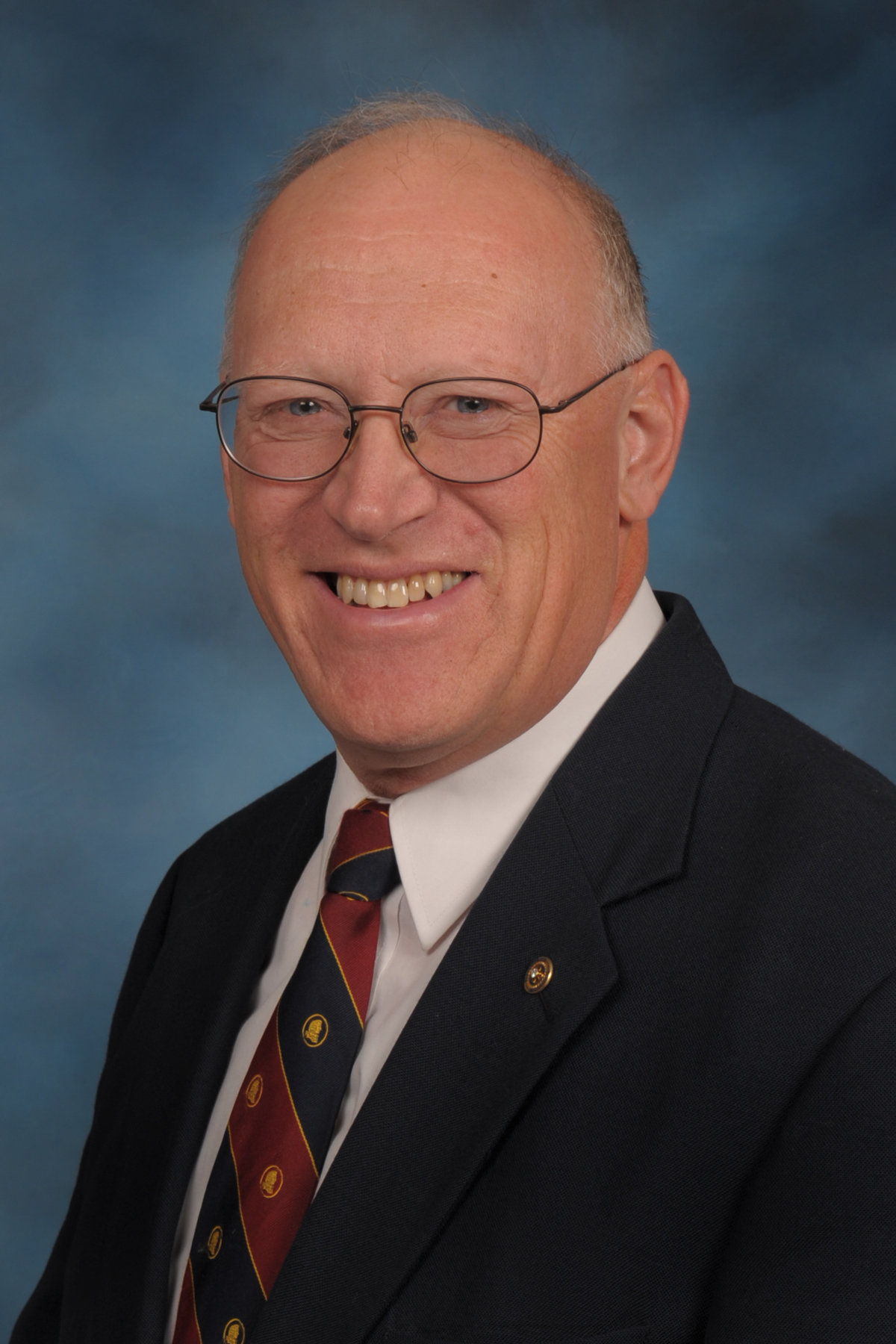Fort Union, New Mexico. At this historic fort, a group of African-Americans are re-enacting the role of the historic U.S. Cavalrymen known as buffalo soldiers. One of their leaders is a man from rural Kansas.
 Jay Clark is founder and organizer of the Wichita Buffalo Soldiers. The name “buffalo soldier” came from the native American Indians in the 1860s, because the strength, courage and curly hair of the African-Americans reminded them of the Great Plains buffalo.
Jay Clark is founder and organizer of the Wichita Buffalo Soldiers. The name “buffalo soldier” came from the native American Indians in the 1860s, because the strength, courage and curly hair of the African-Americans reminded them of the Great Plains buffalo.
One of Jay Clark’s ancestors was a buffalo soldier. Jay’s father served in the military as well. Jay grew up at Nicodemus, which had been originally settled as an all-black colony in northwest Kansas in 1877. Nicodemus is located near Bogue, a rural community of 143 people. Now, that’s rural.
Jay went to Hill City High School and then to Kansas Wesleyan. He played cornerback and tailback in football, set records in track, and was inducted into the Kansas Wesleyan Hall of Fame.
Jay graduated with degrees in accounting and business. He worked in Salina for two years and then moved to Wichita in 1988, where he has worked in sales and operated his own financial services business for a time. Jay got married and now has six children.
In 2004, Jay was in Lyons visiting his brother who rode with a group of buffalo soldier re-enactors from their home in Nicodemus. “Me and this one horse became friends,” Jay said, so he decided to ride with the buffalo soldiers also. The buffalo soldiers unit participated in various activities such as riding in parades and attending events.
One year these buffalo soldiers did a campout at Abilene. Jay really enjoyed sharing the true stories of the buffalo soldiers with the public.
“I fell in love with the educational part of it,” Jay said. In 2013, he established the Wichita Buffalo Soldiers. This unit also rides horses, but concentrates on historically correct encampments which are used to educate the public about buffalo soldiers. They participate in an annual encampment at Haysville and have attended events in Lyons, Ellsworth, Hays, Fort Larned, Mahaffie Stagecoach Stop in Olathe, and the Flint Hills Discovery Center in Manhattan. They have even gone to Fort Union in New Mexico. Jay’s son now participates in re-enactments, and Jay hopes he will carry on this work.
These buffalo soldiers represent the U.S. 10th Cavalry, Company A, as they would have appeared in the post-Civil War era. They wear authentic woollen uniforms and use genuine McLellan saddles and tack.
“The buffalo soldier units were commanded by white officers,” Jay said. In the modern-day group, a gentleman from Great Bend fulfills that role as Captain. Jay is in the role of First Sargent. The encampments include a large Captain’s tent, small shelters for the enlisted men where they slept head-to-toe, a laundry tent for the laundress (portrayed by Jay’s sister), an iron cooking pit for the cook, saddle racks, and a picket line to tie up the horses.
“Everybody has a story to tell,” Jay said. He wants the person in each role to know the historical facts about the job they had to do and be able to share that with visitors from the public.
“There’s so much to share,” Jay said. “At an encampment, people can come back three to four times during the day and learn something new each time.” In addition to the history, Jay tries to share life lessons with kids. “We need three things: Perseverance, so we can keep going in the face of adversity; purpose, so we don’t just drift aimlessly; and God in your life,” he said. “What’s important is not the color of their skin or their nationality, but what’s in the heart.”
Buffalo soldiers have fought in every American war since the units were formed. “The buffalo soldiers won the most Congressional medals of honor of any cavalry unit in history,” Jay said.
It’s time to leave Fort Union, New Mexico where buffalo soldiers from Kansas are sharing their story. We salute Jay Clark and all those who are making a difference by helping this history stay alive.
Audio and text files of Kansas Profiles are available at http://www.kansasprofile.com. For more information about the Huck Boyd Institute, interested persons can visit http://www.huckboydinstitute.org.
